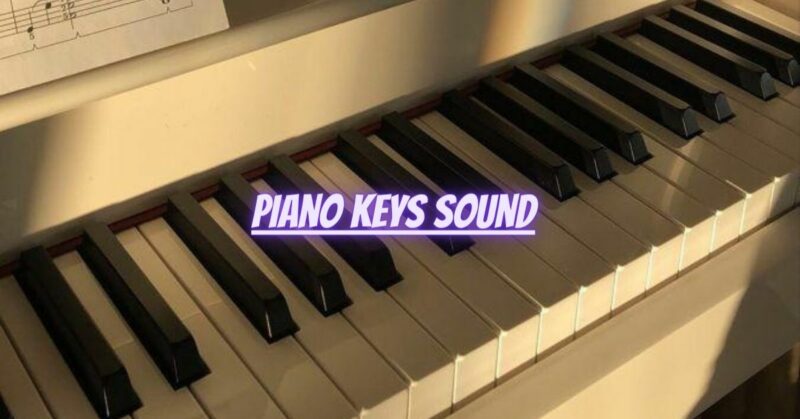The piano keys are a gateway to a world of melodic wonders, producing an array of captivating sounds that have enthralled music lovers for centuries. Each key, when struck by a skilled pianist, releases a rich and harmonious tone that resonates with the soul. In this article, we will explore the enchanting sounds of piano keys, uncovering the factors that contribute to their unique timbres and the emotional impact they evoke in listeners.
1. Acoustic Pianos and Their Resonance:
Acoustic pianos produce sound through a complex mechanical process. When a pianist presses a key, a series of levers and hammers come into play. The hammer strikes the corresponding strings, causing them to vibrate. These vibrations create sound waves that travel through the piano’s wooden soundboard, amplifying and enriching the tone.
2. The Character of Each Key:
The piano’s keyboard is composed of black and white keys, each representing a specific note. The white keys produce the natural notes (A, B, C, D, E, F, G), while the black keys represent the sharps and flats of these notes. The difference in size and mass between the white and black keys contributes to their individual sound characteristics.
3. Dynamics: The Key to Expressiveness:
One of the piano’s most enchanting features is its ability to produce a wide range of dynamics, from the softest pianissimo to the thunderous fortissimo. The force with which a pianist strikes a key determines the volume and intensity of the sound, allowing for expressive and emotional interpretations of musical pieces.
4. Timbre and Harmonics:
The timbre, or tonal quality, of each piano key is influenced by the materials used in the key mechanisms and the strings. Acoustic pianos made with high-quality materials, such as genuine ivory or synthetic materials for the white keys and ebony for the black keys, produce warm and resonant tones. Additionally, harmonics, or overtones, are present in the piano’s sound, contributing to the richness and complexity of the notes.
5. The Role of Pedals:
Acoustic pianos are equipped with two or three pedals that further enhance the sounds produced. The sustain pedal sustains the notes, allowing them to ring out longer, while the soft pedal (una corda) softens the tone by shifting the hammer’s striking point. The sostenuto pedal sustains only selected notes, providing additional opportunities for artistic expression.
6. Digital Pianos and Electronic Keyboards:
Digital pianos and electronic keyboards aim to replicate the sound and feel of acoustic pianos. These instruments use sampled sounds from high-quality acoustic pianos and advanced technology to create realistic piano tones. Some digital pianos also offer a variety of instrument sounds beyond the traditional piano timbre.
Conclusion:
The sounds produced by piano keys are a symphony of emotions, capable of conveying a vast range of feelings, from joy and exuberance to melancholy and reflection. Whether through the acoustic charm of traditional pianos or the technological marvels of digital instruments, the piano keys continue to inspire musicians and audiences alike. As you explore the enchanting sounds of the keyboard, embrace the magic of music and let the piano keys be your guide in the pursuit of artistic expression and soul-stirring melodies.


